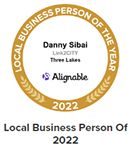Biggest Marketing Fails When Targeting Millennials
Targeting a particular generation in an advertising campaign is not a new strategy, especially with millennials. This generation has been fodder for negative stereotyping and endless jokes.
Whether these stereotypes are fitting is negotiable. What isn’t up for debate is this generation’s immense spending power of more than $200 billion annually. Numbers like these understandably make this age demographic a coveted audience for marketers, although not many succeed in acquiring this thrifty audience.
The majority of the millennial generation has grown up in a world inundated with flashy advertising sometimes just five inches from their face on mobile screens. Reportedly, 74 percent of this generation spends at least five hours per week engaged with online content, according to Content Science Review.
This onslaught of media has massively desensitized millennials to any traditional advertising strategies. As a result, marketers have turned to unconventional or informal ways to engage with millennials without selling something outright. However, mastering a strategy that caters to this demographic is more uncommon than not.
Let’s look at some of the biggest marketing fails when targeting millennials to see what went wrong so that your brand doesn’t have the misfortunate of repeating these mistakes.
Chevy understands the millennial lifestyle

Millennials are often oversimplified as one cohesive group of trendy, bearded, purple-haired hipsters with their smartphones permanently attached to their palms. This description is only fitting for a small percentage of the 75 million people who make up this generation.
This generation includes a diverse range of races, cultures and ages. In fact, it is one of the most diverse generations to date. According to research by the Brookings Institution, millennials—those between the ages of 18 and 34—are 55.8 percent white and almost 30 percent “new minority,” which includes Asian, Hispanic and those of two or more races.
Furthermore, the nomadic, freelance lifestyle that millennials live reportedly only describes 26 percent of millennials, making them the stark minority.
Thus, it’s easy to see how a car company aiming a commercial at such a large demographic ends up buying into these generational stereotypes. While the adconcludes with the Chevy marketer jokingly tossing away the cheesy ideas, in the end, this does nothing to lift the reductive portrayal of millennials.
AudienceBoom CEO Jason DeMers said, “It’s also a good idea to avoid targeting the millennial audience as a general niche. Instead, narrow your engagement by targeting highly specific niche audiences and interacting with your users on an individual level whenever possible.”
Chevy’s commercial was so heavily panned by audiences that even a parodyversion was made.
The lesson we learned from Chevy’s marketing fail: Figure out how your product might fit into their generational experience. Millennials, more than any other generation, have absorbed more knowledge about more diverse cultures and seen more places (even if through a computer screen) on opposite ends of the world. As a result, this is a generation that loves to find new experiences.
A better way for Chevy to market its car to millennials would have been to create roadmaps of various cross-country road trips for people looking for summer vacation activities. This extra touch would provide the value of a new experience to millennials all while advertising the car as the best option to take them on this experience.
Hillary wants to talk about it in three emojis or less

This attempt to engage with a generation that mainly spans from 18 through 34 is not easy to take seriously.
First, Hillary Clinton’s marketing team misunderstands the role that emojis and other digital multimedia play in online conversations.
While many enjoy expressing a mood with a GIF or any emoji, a discussion on student loan debt isn’t commonly a place where one would insert emojis.
For the older generations that mistake the ubiquitousness of emojis popping up in conversations as a sign of an aversion to reading, they will most likely never understand the average millennial.
Using a pizza emoji, for example, to order a pizza from Domino’s is a nifty idea, but using a sad emoji to express your feelings on student loan debts to the former U.S. secretary of state is laughably ineffectual and out of touch.
After all, considering that the goal of broaching this topic is to start building engagement with Hillary supporters, not much of a conversation can be started using an arrangement of emojis.
Clinton’s attempt to appeal to young people is plainly apparent with this tweet, and this marketing strategy offers no real value to the audience.

The lesson we learned from Clinton’s Twitter fail: Millennials are not averse to reading. While they may not buy books in hard copy anymore, they are reading every day online.
When discussing a complex topic, it’s always best to choose text over emojis.
Emojis are fun accessories to a conversation. They can enhance online conversations by offering a bit of tonality and context in a way that would otherwise be lost in text-based messages. They do not, however, replace the need for text-based messages, especially for serious topics. If the content is compelling and pertinent to their experience, this generation will participate.
Microsoft says, ‘Hey, Bae <3’

Microsoft’s effort to use contemporary slang to sway a youthful audience is the epitome of cringe-worthy marketing.
The biggest misstep in this email is the complete misrepresentation of Microsoft, a company that is renowned for technological innovations in software development. If you were to cross out the word Microsoft in this email, it would be impossible to guess to which business this email belongs.
Marketing 101 includes consolidating your messaging in tone and writing style so that your business is easily recognizable to consumers. All branded content should be built into the brand persona and add to it.
Not only does this email not feel like it belongs to Microsoft, but it’s surely the first time anyone has read the words “bae” and “lit” in a professional work email.
The lesson we learned from Microsoft’s email fail: Staying true to your brand persona doesn’t mean that your promotional content can’t be entertaining and youthful.
Replace the slang in this email with its proper English equivalents and this email would be a great invite. Microsoft could then replace that heart emoticon on the first line with a Microsoft-related GIF or video at the bottom of the email.

Millennials as your target demographic is too broad
The millennial generation includes approximately 75 million people spanning a 20-year age gap.
This large demographic that would struggle to remember a time before the internet is jaded to old-school advertising that puts forth any insincerity or misrepresentation to increase sales. But the overarching commonalities in the generation pretty much stop there.
If your company hopes to attract the millennial demographic, you will do well to specify your target market in a more niche group first and foremost. The label “millennial” leads brands to rely on using exhausted stereotypes in an attempt to relate to everyone as if all 75 million people belong to one exclusive club.
Learn from these companies’ blunders and begin brainstorming marketing strategies that convey a sense of intimacy, sincerity or a one-sided friendship, while staying suited to your brand’s image. Hopefully, your efforts will create an entertaining piece of content that offers real value and doesn’t offer any of the blunders like the campaigns mentioned above.
Source: Adweek “Cringe-Worthy-Attempts-To-Market-To-Millennials”





























